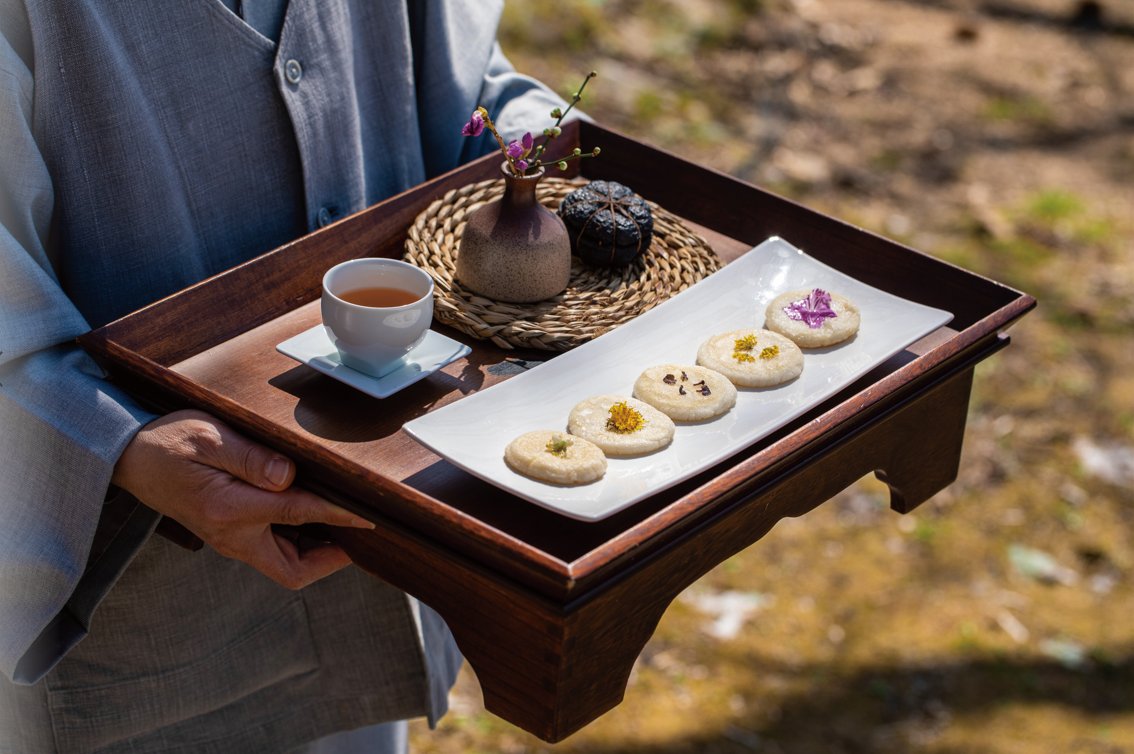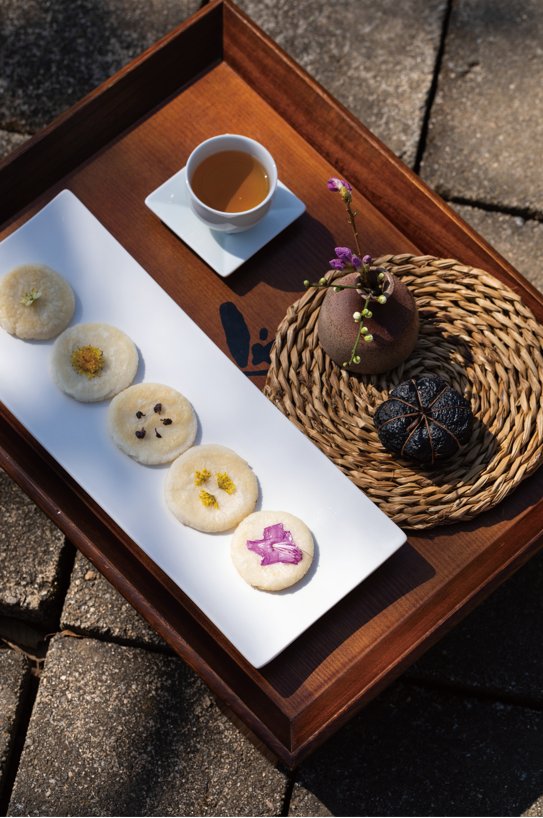 |
Hwajeon with spring flowers (Cultural Corps of Korean Buddhism) |
The Ven. Yeogeo entered monastic life 21 years ago at age 31, relatively late to become a nun in Korea.
Thanks to her Buddhist parents, she had become familiar with temples at a young age. When she turned 19, she visited the temple Yongjusa in Hwaseong, Gyeonggi Province, and decided to renounce secular life then. She became an enthusiastic member of Yongjusa’s Young Buddhist Association and began studying Buddhism in earnest. Memorizing sutras written in Chinese characters and understanding their meaning by consulting a dictionary was not easy, but she also enjoyed her deepening understanding. She finally became convinced that this was her calling, and after being formally recommended by another nun, she became a postulant at Buryeongsa.
“Because the residents of Buryeongsa lead a communal life, visitors who arrived outside of meal time could not eat. I was concerned about their being tired after an arduous trip to the temple and not being able to eat, so I began serving them snacks when they had tea with our monastics.”
 |
Hwajeon with spring flowers (Cultural Corps of Korean Buddhism) |
In spring she picked flowers and made hwajeon, pancakes decorated with edible flowers. She also made mandu, Korean dumplings, by preparing fillings with seasonal vegetables. She also made tea from plants she gathered from the mountains and fields, including shoots of winged spindle, ginger, chocolate vine, mugwort and dandelions. Her tea trays required much devoted labor and word of them spread.
“Spring plants and veggies these days are loaded with energy because they sprouted after enduring a long harsh winter. They are perfect to eat at this time when the sun gets warmer and our bodies feel tired. Bitter plants like toothed ixeridium, Sonchus-leaf crepidiastrum, mugwort and dandelions have medicinal qualities. One can get through the summer better by eating lots of spring veggies and plants,” Yeogeo said.
Three spring flowers that bloom early are azaleas, Asian plums and Cornelian cherries. Hwajeon — thin panfried rice cakes decorated with flower petals — are a traditional dessert that can be enjoyed only in spring. Just one bite gives off a gentle aroma that permeates the mouth.
[Ingredients]- 4 azalea flowers
- 4 Asian plum flowers
- 12 Cornelian cherry flowers
- 2 cups glutinous rice powder
- 2 tbsp cooking oil
- 2 tbsp perilla oil
- 1 tsp salt
- 1/2 tsp sugar
- 1/2 cup hot water
[Directions]1. Mix the glutinous rice power with salt, and make dough by adding the hot water little by little.
2. Wrap the dough with a wet cotton cloth or plastic wrap.
3. Tear off sepals, the outer parts of the flower that enclose a developing bud, wash the flowers and drain.
4. Tear off the dough in small portions, spread them into a thin, round shape, and place them on a preheated, oiled pan.
5. Put azaleas, Asian plums, and Cornelian cherries on top of the dough and press gently.
6. When the bottom of the dough gets golden brown, turn it over and cook slightly.
7. Sprinkle a plate with sugar and place the hwajeon on it.
Provided by Cultural Corps of Korean Buddhism
-------------------------------------------------------------------
Temple food is food of the ascetics who express gratitude for all forms of life and wish for peace for the whole world. The Cultural Corps of Korean Buddhism operates the Korean Temple Food Center where guests can learn and experience temple food. -- Ed.By Korea Herald (
khnews@heraldcorp.com)







![[Herald Interview] 'Trump will use tariffs as first line of defense for American manufacturing'](http://res.heraldm.com/phpwas/restmb_idxmake.php?idx=644&simg=/content/image/2024/11/26/20241126050017_0.jpg)
![[Exclusive] Hyundai Mobis eyes closer ties with BYD](http://res.heraldm.com/phpwas/restmb_idxmake.php?idx=644&simg=/content/image/2024/11/25/20241125050044_0.jpg)
